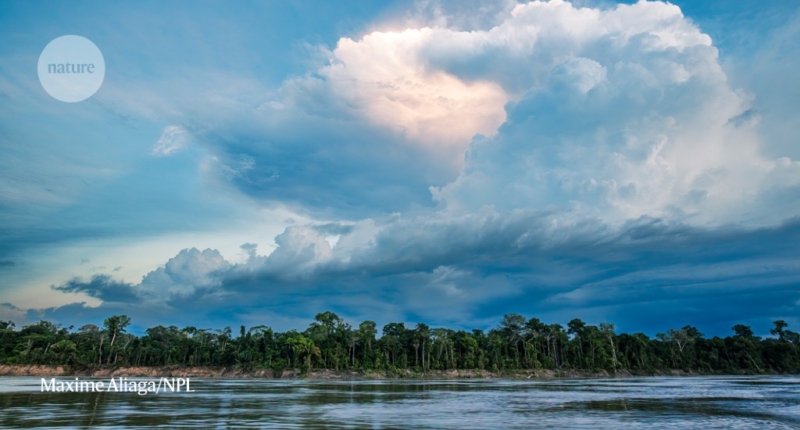Governments and policymakers need to reshape water markets to manage both blue and green water as a global common good. Effective water management starts locally, where national governments, cities, and regions define mission-driven objectives that add up globally. Targets and strategies should be developed to promote coordination, financing, and innovation across sectors, including food production. Water governance and management should span all scales, from local watersheds to the global level, connecting precipitation and evaporationsheds. The impact of extreme events and the costs associated with them should also be studied in the context of precipitationsheds and evaporationsheds. Scientists need to assess water stocks and flows of green and blue water, locally and globally, using big data, satellites, and Earth-system models. Private investment in water globally accounts for less than 5% of the total funds allocated to basic services, highlighting the need to rethink water economics to value water as an asset that generates functions and services for human well-being.
The Need for a New Economics of Water as a Common Good
Water is essential to life on Earth, circulating carbon and nutrients in the air and in soils, regulating the climate, and sustaining conditions conducive to human development. However, anthropogenic pressures and climate change are now threatening to undermine the reliability of rainfall itself, causing devastating floods and severe droughts that affect millions of people worldwide.
More than two billion people still lack access to safe drinking water, one child dies every 17 seconds from waterborne diseases, and three billion people face food insecurity due to water scarcity. These numbers could grow with the global population unless water provision improves. Therefore, a radical shake-up in how water is governed, managed, and valued is necessary, from local to global scales, including a re-evaluation of human water needs.
Currently, the water sector focuses on flows of “blue” fresh water, assuming that it will be continually replenished within historical ranges. Utilities capture and extract this water locally for drinking and sanitation, agricultural irrigation, and industry. However, this premise no longer holds true in many places.
Water managers have always had to deal with natural variability, building larger reservoirs and tapping aquifers to fight scarcity. However, current challenges and trends in this century demand a completely different approach, including a better understanding, new economic thinking, and an international governance framework.
To stave off the impacts of anthropogenic pressures and climate change, we need to consider water as a common good, and water management must be based on equity, efficiency, and sustainability. The world needs a new economics of water that values its multiple uses, such as supporting ecosystems, culture, and human well-being, and takes into account the environmental, social, and economic impacts of water-related decisions.
In conclusion, we need to prioritize water in the global agenda and make it central to climate action. A new approach to water management is crucial to ensure a reliable and sustainable water supply for current and future generations.
The Importance of Viewing Water as a Global Common Good
Global warming is causing an increase in precipitation worldwide, with each degree of warming leading to a 1-3% increase in global mean precipitation. This rise in precipitation is expected to increase up to 12% by the end of the century compared to the period between 1995 and 2014, with the frequency and severity of both floods and droughts also rising. Deforestation, land degradation, and infrastructure development are further altering precipitation patterns, which in turn, is impacting where water comes from and where it ends up. Meanwhile, excessive extraction of water for irrigation and industry is aggravating water shortages in river basins worldwide, from the Colorado in the United States and the Yangtze in China to the Murray-Darling in Australia.
To address these growing challenges, water must be reimagined as a global common good. This entails governments worldwide establishing an obligation under international law to protect the global water cycle for all people and generations. It also means acknowledging that actions in one place have impacts in another. For example, deforestation in Brazil can have consequences for rainfall in Peru. Governments and private sectors must work together to reformulate their roles and responsibilities, develop objectives, policies, and funds that can reshape markets and better manage global water supplies. This issue must be discussed at the United Nations Water Conference, where discussions around these challenges will take place.
To effectively manage fresh water on a global scale, we must move beyond our current focus on capturing “blue” water, which constitutes only 35% of all fresh water on land, and instead encompass “green” water, which accounts for the remaining 65%. Flows of moisture and vapour from land and vegetation are essential for regulating the water cycle, securing future rainfall, and enabling carbon sequestration in soils and forests. As much as 50% of terrestrial precipitation globally comes from green water evaporated over land, with the rest originating from evaporation over the ocean. Thus, changes to the landscape can alter water supplies in regions downwind, as well as changing local climates and streamflows. Deforestation in the Congo Basin, for instance, can lower rainfall in neighbouring countries and even across the Atlantic in the Amazon. Similarly, heavy irrigation of crops in India can boost the streamflow of the Yangtze River in China through moisture transported downwind.
In conclusion, there is an urgent need to view water as a global common good and to assess the role and economic value of not just blue fresh water but also green water. Governments and private sectors must reformulate their roles and responsibilities to better manage global water supplies. Effective management of fresh water on a global scale requires an understanding of all water flows within and between nations, including green water, and the impacts that actions in one place can have on water supplies in other regions.
The Interconnectivity of Atmospheric Flows and Water Supplies
To better understand how atmospheric flows of water vapor connect different regions, researchers are developing a new view of interconnectivity by combining meteorological databases with computer models that connect likely sources and sinks. By analogy with watersheds on land, researchers refer to ‘precipitationsheds’ and ‘evaporationsheds’ in the atmosphere. A precipitationshed is where rain comes from, while an evaporationshed is where evaporation goes to. Evaporation refers to total evaporation from the ocean and green water flows from land, including from soil and water bodies, as well as transpiration from vegetation.
The combination of meteorological databases and computer models helps researchers calculate volumes, ratios, and flows of evaporation and precipitation in different regions. Researchers need to understand better how these processes interact and how atmospheric flows of water vapor connect different regions. We used such data to illustrate the interconnectivity of atmospheric flows and water supplies in several regions.
Brazil
Brazil is largely self-sufficient in green water and precipitation. Around 60% of its rainfall comes from moisture evaporated from the Atlantic, and 35% from moisture from Brazilian lands, including the Amazon rainforest. Much of this airborne moisture stays within the country, trapped by the High Andes. However, Brazil also exports 25% of its green water to downwind countries such as Argentina, Bolivia, and Colombia. Rainfall in these nations will drop if deforestation in the Amazon continues. Unfortunately, no political or institutional arrangements exist to address this dependency.
Nigeria
Rainfall patterns in sub-Saharan Africa are tightly interwoven. Nigeria derives 64% of the moisture that precipitates its rainfall from within the continent. Of this, 22% comes from within and 42% from outside its borders, predominantly from the Congo Basin. Nigerian land contributes 43% of the evaporated water driving rainfall in neighboring countries such as Cameroon, Guinea, and Ghana. Deforestation in central Africa puts all these countries’ water supplies at risk.
China
China heavily relies on water evaporated from land for its precipitation (74%). Of that, 44% comes from internally recycled moisture, and the rest from upwind neighbors, including India, Kazakhstan, and Russia. Moisture from Chinese land also has a large role in rainfall across Central Asia and the Tibetan Plateau.
In conclusion, understanding how atmospheric flows of water vapor connect different regions is vital for effective water management. Countries where prevailing winds blow from the ocean have a plentiful and consistent source of moisture and little dependence on other nations. However, landlocked countries are more vulnerable to natural variability and the practices of neighbors over which they have no control. Political and institutional arrangements are necessary to address the dependency of downwind countries on the upstream practices of their neighbors.
Understanding the Global Water Cycle
Anthropogenic pressures and climate change are disrupting the global water cycle, threatening the reliability of rainfall itself. Each 1°C of global warming can increase global mean precipitation by 1-3%, and it could rise up to 12% by the end of the century, causing more frequent and severe floods and droughts. Deforestation, land degradation, and infrastructure development are altering precipitation patterns and affecting where water comes from and ends up. Over-extraction of water for irrigation and industry is also aggravating water shortages in river basins across the globe. To address these challenges, a radical shake-up in how water is governed, managed, and valued is needed.
Water is crucial for keeping humans, animals, and plants alive, regulating climate, and helping to circulate carbon and nutrients in the air and soil. However, anthropogenic pressures are pushing the cycle out of balance, which is already being felt across the world in devastating floods and severe droughts. Furthermore, over 2 billion people still lack access to safe drinking water, and one child dies every 17 seconds from waterborne diseases.
Understanding Precipitationsheds and Evaporationsheds
Researchers refer to ‘precipitationsheds’ and ‘evaporationsheds’ in the atmosphere by analogy with watersheds on land. A precipitationshed is where rain comes from, while an evaporationshed is where evaporation goes to. To manage freshwater on a global scale, researchers must go beyond our current focus on capturing blue water (which constitutes 35% of all freshwater on land) to include green water (which makes up the remaining 65%).
Landscape changes can alter water supplies in regions downwind, as well as changing local climates and streamflows. Moisture and vapor flows from land and vegetation are essential for regulating the water cycle and securing future rainfall, as well as enabling carbon sequestration in soils and forests. For example, deforestation in the Congo Basin can lower rainfall in neighboring countries and even across the Atlantic in the Amazon. Heavy crop irrigation in India can boost the streamflow of the Yangtze River in China. Understanding how these processes interact and how atmospheric flows of water vapor connect different regions is crucial to managing freshwater on a global scale.
Rethinking How Water is Valued and Who ‘Owns’ It
Treating water as a collective resource requires rethinking its economics. Currently, blue water is managed and regulated largely as a public good for drinking and sanitation. However, public ownership undervalues water, leading to excessive, unsustainable, and inequitable use. It also discourages private investment, as private-sector investment in water globally accounted for less than 5% of the total funds allocated to other basic services. By contrast, green water is given no economic value, despite driving economic development, stabilizing climate change, and securing precipitation. It can be public, private, or a common good, depending on where it is.
Governments and the private sector must reformulate their roles and responsibilities to develop objectives, policies, and funds that can reshape markets and better manage global water supplies. To inform policies, scientists need to assess water stocks and flows of green and blue water, locally and globally, using satellites, big data, and Earth-system models. Hydrologists, economists, and political scientists will need to set budgets for green and blue water across scales while keeping the sources and patterns of fresh water within ranges typical of the past 12,000 years, during which human civilizations evolved.
Managing Blue and Green Water
Water is an essential resource for life, but its management and governance are becoming increasingly complex due to the growing demand for water and the effects of climate change. In light of this, experts are calling for water to be recast as a global common good, which would require rethinking how water is valued and who owns it.
Valuing Green Water
Green water, which constitutes 65% of all fresh water on land, drives economic development, stabilizes climate change, and secures precipitation, yet it is not given any economic value. To manage green water as a global common good, governments must monitor soil moisture and vapor flows, set policies that value these flows as natural capital, and evaluate the amount of green water needed to sustain biodiversity and carbon sinks in ecosystems.
Reshaping Water Markets
To bring in businesses and investments, economists need to value water as an asset that generates functions and services for human well-being. This could follow the framework established in the Dasgupta Review on the economics of biodiversity, published by the UK government in 2021, which sets value on natural capital and manages natural assets within a sustainability framework.
Public-Private Arrangements
New forms of public–private arrangements, including permits, property rights, and procurements, should be developed to counteract the rent-seeking and value-extractive behavior that has plagued some national water sectors. Whenever private companies benefit from public subsidies, guarantees, loans, bailouts, and procurements, governments could attach conditionalities to contracts to maximize public benefits.
Conclusion
To manage blue and green water as a global common good, governments need to reshape water markets, monitor soil moisture and vapor flows, set policies that value these flows as natural capital, and develop new forms of public–private arrangements. Only then can we ensure that access to clean drinking water remains a global problem, one that could worsen as the world’s population continues to rise.
Water is essential for human well-being, and the need for clean drinking water has become a global problem. However, water is treated as a collective resource, which means that it is undervalued and overused, leading to excessive and unsustainable consumption. Moreover, the current water governance and management systems focus only on the transboundary issues of rivers, lakes, and groundwater, without considering precipitation and evaporationsheds, the atmospheric flows of water vapor connecting different regions. A new view of interconnectivity has emerged, through combining meteorological databases and computer models that connect likely sources and sinks.
Managing water as a global common good requires reshaping water markets to reshape the economics of water, not just fix them when they fail. Governments must monitor soil moisture and vapor flows and set policies that value these flows as natural capital. To value water as an asset that generates functions and services for human well-being, economists could follow the framework established in the Dasgupta Review on the economics of biodiversity. Researchers must evaluate the amount of green water needed to sustain biodiversity and carbon sinks in ecosystems, as well as assess the social cost of water.
Effective management of water as a global common good starts locally, and all sectors must be involved. National governments, cities, and regions need to define goal-driven missions that add up globally. For example, nations might pledge to ensure that the supply of green and blue water in the hydrological cycle inside their borders remains within a manageable range, as defined by safe planetary limits or boundaries. Production and consumption processes should be redesigned to minimize water waste and maximize water sharing, as seen in Australia and Kenya.
The European Union’s Water Framework Directive requires EU member states to develop river-basin management plans jointly with the public every six years. All sectors must be involved, such as food production, which accounts for around 75% of freshwater consumption globally. India, the largest consumer, might focus on ensuring continuity of food supply without imposing pressures on national use of green and blue water.
Cooperation and exchange of knowledge will be crucial to join up local and global strategies. The United Nations and other bodies will need to develop mechanisms for overseeing the planet’s water resources, as with greenhouse-gas accounting and the Sustainable Development Goals. A new independent Global Commission on the Economics of Water has been launched, which is assessing impacts on the global hydrological cycle from climate and environmental change, as well as country interdependencies and the international cooperation needed to treat water as a global common good.
In conclusion, managing water as a global common good is vital to secure water supplies for human well-being, stabilize climate change, and sustain biodiversity and carbon sinks in ecosystems. Reshaping water markets and starting locally to build globally, involving all sectors and cooperation, and exchange of knowledge is necessary. None of these will be easy, but the future of Earth’s bloodstream is at stake.
Don’t miss interesting posts on Famousbio










